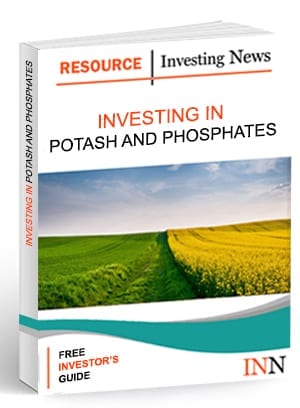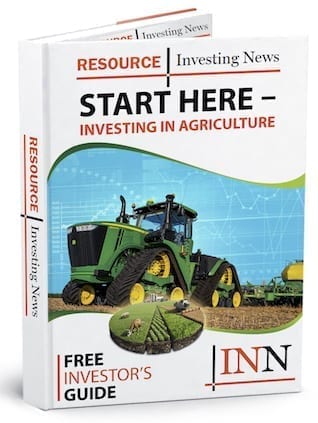Click here
to read the previous potash outlook.
The price of muriate of potash (MOP) remained depressed in 2020 despite increased food costs globally and better growing conditions.
The
most common of the potash fertilizer
group, MOP started 2020 dipping below its December 2019 average price of US$265 per metric tonne (MT) to US$245 MT. Values held in that range until May when another decline set in.
From June through December, MOP was selling for US$202.50 MT, a 23 percent decrease from its 2019 average.
One factor that contributed to the decrease was the widespread
toll of the pandemic
.
“COVID-19 has touched every continent and caused untold economic damage, but even against this backdrop, the global MOP industry has endured better than many other industries — and indeed, better than some rival fertilizers,” said Andy Hemphill, senior markets editor, sulfuric acid and potash at ICIS Fertilizers.
“With a global nameplate production capacity greater than 69 million tonnes/year, and annual trade of approximately 53m tonnes, potash is one of the most-used stock fertilizers, trusted by agribusinesses worldwide.”
As most commodities tanked in March, MOP prices held steady, at the US$245 level. Likely due to the small amount of producers and the limited number of countries that have potash output.
Canada, Belarus, Russia, China and Germany comprise
the top 5 countries by output
, accounting for roughly 35 million tonnes of the 61 million tonnes of annual production.
“This dichotomy between great market size and the limited number of MOP majors worked in favor of the potash industry as the coronavirus spread across the globe, helping to alleviate the logistical difficulties faced by many other industries — and indeed, rival fertilizers,” explained Hemphill.
Despite being fairly insulated from the widespread March volatility, MOP did feel the effects of global lockdowns. These conditions were further heightened by the declining price.
“Already weakening at the start of 2020, by Q2 MOP offers were sliding ever lower, and Belarus Potash Company (BPC) decided to nip the downward movement in the bud,” he said.
As Hemphill pointed out, the world’s largest private potash company, BPC, reached a deal at the end of April, with a consortium of Chinese buyers on MOP contracts for the second half of 2020. The agreed upon price was US$220/tonne including cost and freight (CFR).
“The agreement — a US$70/tonne decline on the previous benchmark of US$290/tonne CFR agreed for 2018-2019 — took many players by surprise, with one southeast Asian distributor describing the decrease as ‘amazing,’ and beyond predictions,” said Hemphill.
In the press release, BPC credited the precariousness of the global situation and the importance of the
agricultural
sector as reasoning behind the deal.
“Food security is once again at the top of the list, and regularity of food production and related distribution chains must be prioritized,”
reads the announcement
. “It is at such moments that central to humanity concepts of responsibility and care for our common future come into play.”
Following the Chinese agreement, a six-month supply contract with India (the second “key bellwether import market”) was reached at a CFR of US$230 per tonne.
“This price was a US$50/tonne slide on the last agreement for India, and US$10/tonne above China’s benchmark deal, further cementing ‘the basement of the market,’ as one MOP major’s Latin American sales chief put it,” said Hemphill. “Since then, MOP prices have either stabilized or ticked up slightly — albeit remaining far from the highs seen in 2019.”
Potash outlook 2021: Supply constraints may move prices
While BPC opted for a lower price point in its top markets, other producers chose to curtail output in 2020.
January, saw Mosaic (NYSE:
MOS
) shut down its Colonsay potash mine in Saskatchewan indefinitely due to excess inventory and poor market conditions. The company had previously idled the mine in August 2019, a year that also impacted sector major Nutrien (NYSE:
NTR
,TSX:NTR).
In 2019, the leading potash producer,
idled production
at three mines in the Canadian province, reducing its output by an estimated 700,000 metric tons.
Both companies had anticipated a better market in 2020, before the coronavirus weakened the global economy. Though mitigated due to the ceaseless need for food production, the MOP market was impacted.
“Fertilizers and food are vital industries,” said the senior markets editor for the Independent Commodity Intelligence Services firm. “More impact was felt in logistics, delayed deliveries, compound fertilizer plant outages, and staff shortages.”
An increase in demand also helped keep the pandemics toll on the potash market at bay. In December 2020, US farm income was slated to increase 43 percent year-over-year. The rise was attributed to a bump in crop prices, and an increase in government aid.
For Canada, sales receipts registered 8 percent growth for the first nine months of the year. Like the US, the province of Saskatchewan home to mines owned by mining leaders, Nutrien, Mosaic and BHP (ASX:
BHP
,NYSE:BHP,LSE:BLT) announced plans to offer more incentive to potash companies.
The amended Potash Production Tax Regulations feature a 40 percent tax credit for research and development projects and market development programs.
“These changes will promote the expansion of Saskatchewan’s potash sector and ensure that our province remains the preferred jurisdiction in which to pilot innovative technologies,” Energy and Resources Minister,
Bronwyn Eyre wrote
.
“As we move into economic recovery, we want to attract and foster new, sustainable advancements in our province’s world-class
resource
sector.”
For Hemphill, the announcement will bolster Canada’s sector. Especially the firm that is in charge of all the potash exporting and marketing in the country.
“(Canadian Potash Exporters) Canpotex is a heavyweight in the global MOP market, and additional sources of supply would only increase the marketing arm’s selling power,” he said.
Potash outlook 2021: A look ahead
Prices have held at US$202 MT for the last seven months; however analysts and sector participants believe an increase in food demand, loss of fertile land and population growth are undeniable and will result in higher MOP values.
Hemphill, expects prices to rise overtime if the global community can gain control of the coronavirus.
“The global MOP market entered 2021 with roughly the same degree of supply and demand as before — albeit with pricing well below that seen at the end of 2019,” said Hemphill.
“Over time, it is likely MOP offers will tick up, spurred by firmer contract prices in India in China — although the highs seen in years past will remain distant memories until a reliable cure for COVID-19 can be found, and the world turned right-side-up once again.”
In the short term, an increase in contracts penned by Indian buyers in January is seen as likely and a potential tailwind. For the long term, Hemphill sees a more balanced market with positive fundamentals, barring a few caveats.
“We expect global production to stabilize or increase slightly — at least initially,” he said.
“Provided 2021 proves a more bullish year for demand as (hopefully) a vaccination programme restores the world to working order, producers will likely attempt end-year production control; as is normal to tighten supply and support pricing in quieter winter months.”
Don’t forget to follow us
@INN_Resource
for real-time updates!
Securities Disclosure: I, Georgia Williams, hold no direct investment interest in any company mentioned in this article.
Editorial Disclosure: The Investing News Network does not guarantee the accuracy or thoroughness of the information reported in the interviews it conducts. The opinions expressed in these interviews do not reflect the opinions of the Investing News Network and do not constitute investment advice. All readers are encouraged to perform their own due diligence.





